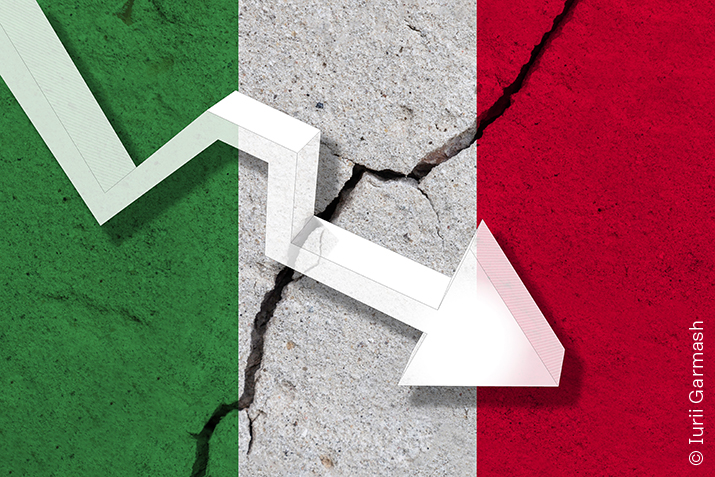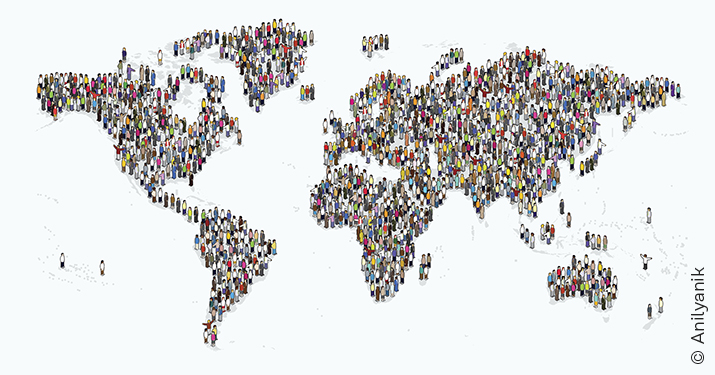Demography (a noun made up of two Greek words, which can be translated as 'people' and 'writing') is the science that studies human populations, their size, composition and evolution. Focusing mainly on quantitative aspects, it makes use of a complex and varied set of statistical indices.
This brief introduction is intended to preface how this science is in itself neutral, aiming to capture objective data, both in terms of immediacy and prospective trends.
At the same time, it is equally evident how it ends up influencing the assessment that analysts of international affairs make of a particular country or an entire geographical region. Alongside other indicators, such as overall gross domestic product (GDP), average per capita income, level of schooling, freedom of the press or accessibility of public services, the trend of population increase or decrease is in fact of significant specific weight in the judgement of these specialists.
Taking as an example two protagonists of world current affairs, the announced, imminent overtaking of India by the People's Republic of China in terms of population has taken on the connotations of an indirect confirmation of the greater dynamism of Delhi's economy compared to Beijing, hinting at a not too distant change of leadership in that fundamental continent.
From the point of view considered here, in Europe, the cradle of those foundations of democracy and respect for human rights that are constantly 'valorised' in relations with third states, the situation leads to concerns that are as serious as they are well-founded. According to the latest data from Eurostat, the official statistics centre of the European Union (EU), for several years now the average fertility rate has remained well below the so-called 'replacement threshold' of 2.1 children per woman, having fallen to 1.46. A circumstance that is promptly confirmed by the fact that in the decade 2013/2023 in the EU area the balance between new births and deaths was negative (minus 1.3 million people).
Consequently, if the resident population has been increasing during the period considered above, the 'credit' can be attributed exclusively to the substantial influx of immigrant populations, primarily from North African and Asian countries, joined - following the criminal Russian attack at the beginning of 2022 - by huge flows from Ukraine. The most up-to-date census reports 448.8 million people living in Europe, an increase of more than 7 million compared to 2013. In overall terms, this translates into a 9% share of the composition of the world population, a far cry from the 25% recorded at the beginning of 1900.
Given that the negative trend is common to all 27 member states, the national average fertility indices remain higher in the most recent EU Member States, with the sole exception of France, which, thanks in part to innovative and effective social and family protection policies, is able to stand at a decent index of 1.79.
As mentioned, the demographic factor is part of the statistical surveys compiled to review the 'positivity' of a particular country-system. This factor does not seem to have been taken into account by the experts who recently ranked Finland - a country with a fertility rate well below the already worrying European average (1.32 compared to 1.46) - as the 'happiest' European country. Perhaps aware of the contradictions inherent in such an analysis, the Finnish school authorities went so far as to propose the allocation of the vacant places in school classes to children from developing countries.
And what about Italy? Our country (and in this case we refer to Istat data) occupies one of the bottom ranks in European demography, on the basis of a fertility rate (1.24) that is among the lowest ever, resulting in the loss of almost two million inhabitants (from 60.8 to 59 million) in the period 2014/2022. In world terms, Italy has retreated from being the 10th most populous country (in 1950) to its current 25th place, with an all-time low of 380,000 births in 2023.
One of the remedies can be identified in the adoption of broad and forward looking regulatory measures capable of reversing the curve, not only in the social, educational or health fields but also culturally speaking.
Returning to the continental dimension, the basic question to be asked is whether we intend to entrust increasingly smaller generations with the arduous task of asserting those political, behavioural, ethical and moral values with which, as Europeans, we fully identify, to the rest of the world. All this in a global context that is certainly not easy and, indeed, in some ways 'hostile' because it is marked by the disturbing advance of totalitarian regimes and the spread of potentially devastating natural phenomena. Answering in the negative should be a no-brainer.
The Director, Marco Marsilli









